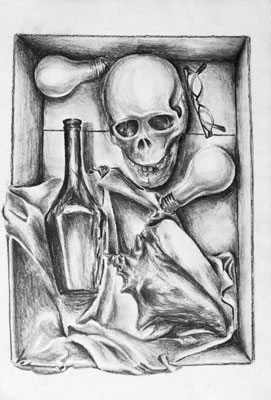All Nonfiction
- Bullying
- Books
- Academic
- Author Interviews
- Celebrity interviews
- College Articles
- College Essays
- Educator of the Year
- Heroes
- Interviews
- Memoir
- Personal Experience
- Sports
- Travel & Culture
All Opinions
- Bullying
- Current Events / Politics
- Discrimination
- Drugs / Alcohol / Smoking
- Entertainment / Celebrities
- Environment
- Love / Relationships
- Movies / Music / TV
- Pop Culture / Trends
- School / College
- Social Issues / Civics
- Spirituality / Religion
- Sports / Hobbies
All Hot Topics
- Bullying
- Community Service
- Environment
- Health
- Letters to the Editor
- Pride & Prejudice
- What Matters
- Back
Summer Guide
- Program Links
- Program Reviews
- Back
College Guide
- College Links
- College Reviews
- College Essays
- College Articles
- Back
Coco and Media Representations of Mexican Culture
Released during a time of cultural tension, “Coco” was used to try and absolve barriers. The movie began production in 2011 and was released in 2017, each year having very different political climates. During a time where some demonize Latin American culture, “Coco” humanized those beyond the wall. Despite the director and creator being a Caucasian man from Cleveland, it is believed that “Coco” does its job when representing Mexican culture and the Day of the Dead. Representation of the holiday varies from papel picado, marigolds, and ofrendas are littered within the nearly two-hour movie. Unkrich does his job well as the creator of the movie and covers Dia de los Muertos in a way that many should be proud of.
A big problem in Hollywood that anyone can see is lack of representation. Many people have trouble seeing themselves in characters on the big and small screen. When creators and directors decide to show minorities in their films, some struggle with finding a way to do so respectfully. Lee Unkrich ran into this problem when he started production for “Coco”, and seeked help from the Latino people around him. He took trips to Mexico and hired an all-Latino cast in attempt to do his job right. This resulted in a celebration of a culture that many currently frown upon, and a clear view of a holiday celebrating what many, in our culture, fear.
The movie starts with a prologue told in papel picado. Not only does this give a chance for beautiful animation, but it gives a nod to Mexican tradition. Papel picado is used to decorate ofrendas on the Day of the Dead, made out of soft paper with intricate patterns. In Miguel’s family home, a complex, full ofrenda is also displayed. An ofrenda being a display of pictures of the dead, their favorite foods, and keepsakes.
Marigolds play a significant role in Dia de los Muertos, and “Coco” shows that well. It is believed that marigolds guide the dead to their family with their bright colors and exaggerated scent. In the movie, the bridge from the Land of the Dead to the Land of the Living is made of marigold petals. This represents the meaning of the marigolds well, taking their meaning literally. Marigold petals are also used when Miguel is trying to get back to the Land of the Living.
In conclusion, director Lee Unkrich and his team represent Dia de los Muertos and Mexican culture well. While giving nods to holiday traditions, respect is also given to the culture that many love. Becoming the highest grossing movie in Mexico, the movie’s impact is clear. Many in the Latino community found comfort in the movie, found happiness in being represented positively. Humanizing people during a time of distress, “Coco” does more than its creators originally intended.

Similar Articles
JOIN THE DISCUSSION
This article has 0 comments.

A Spanish 1 assignment that I may or may not have put more thought into than what was expected.